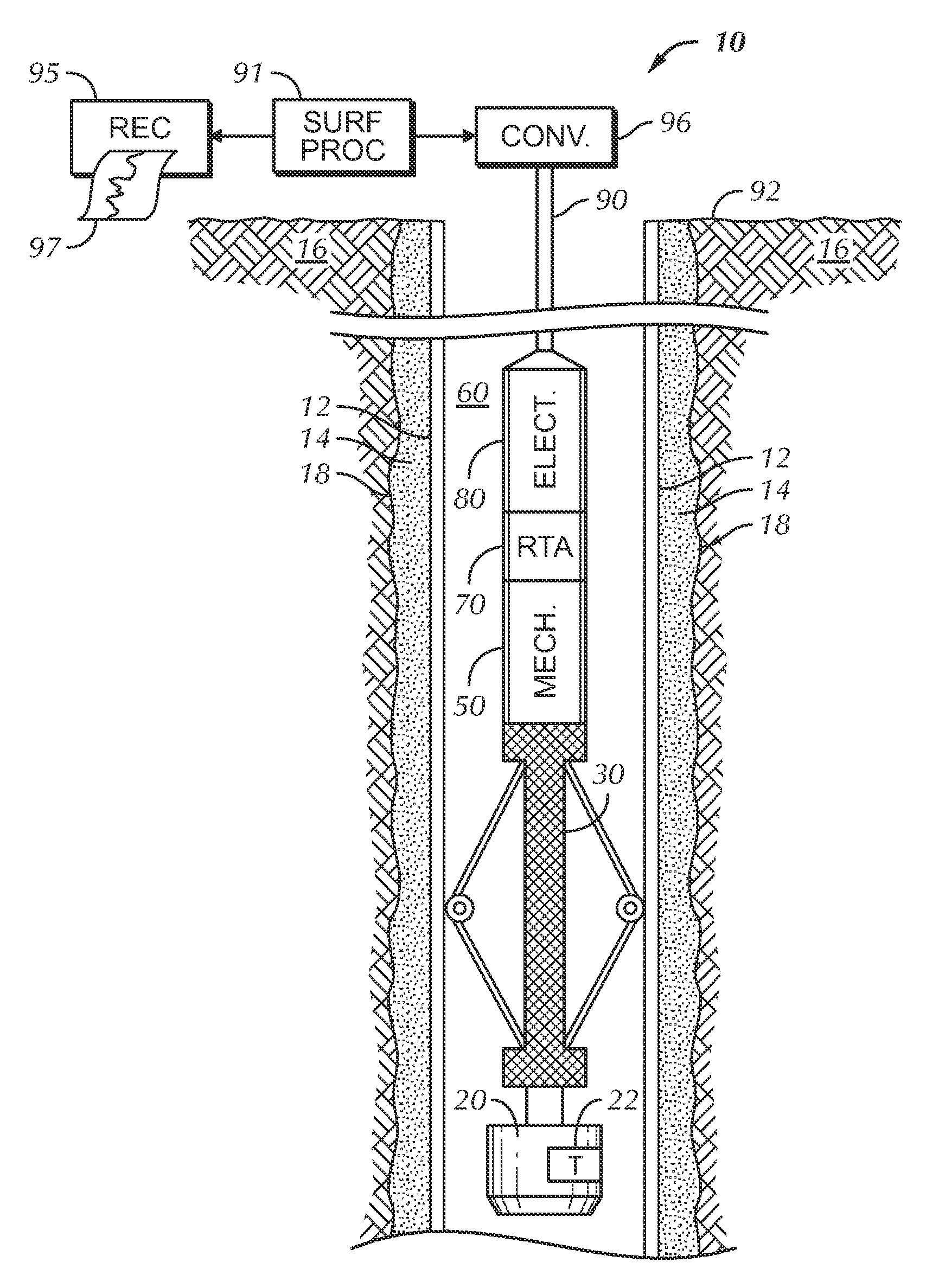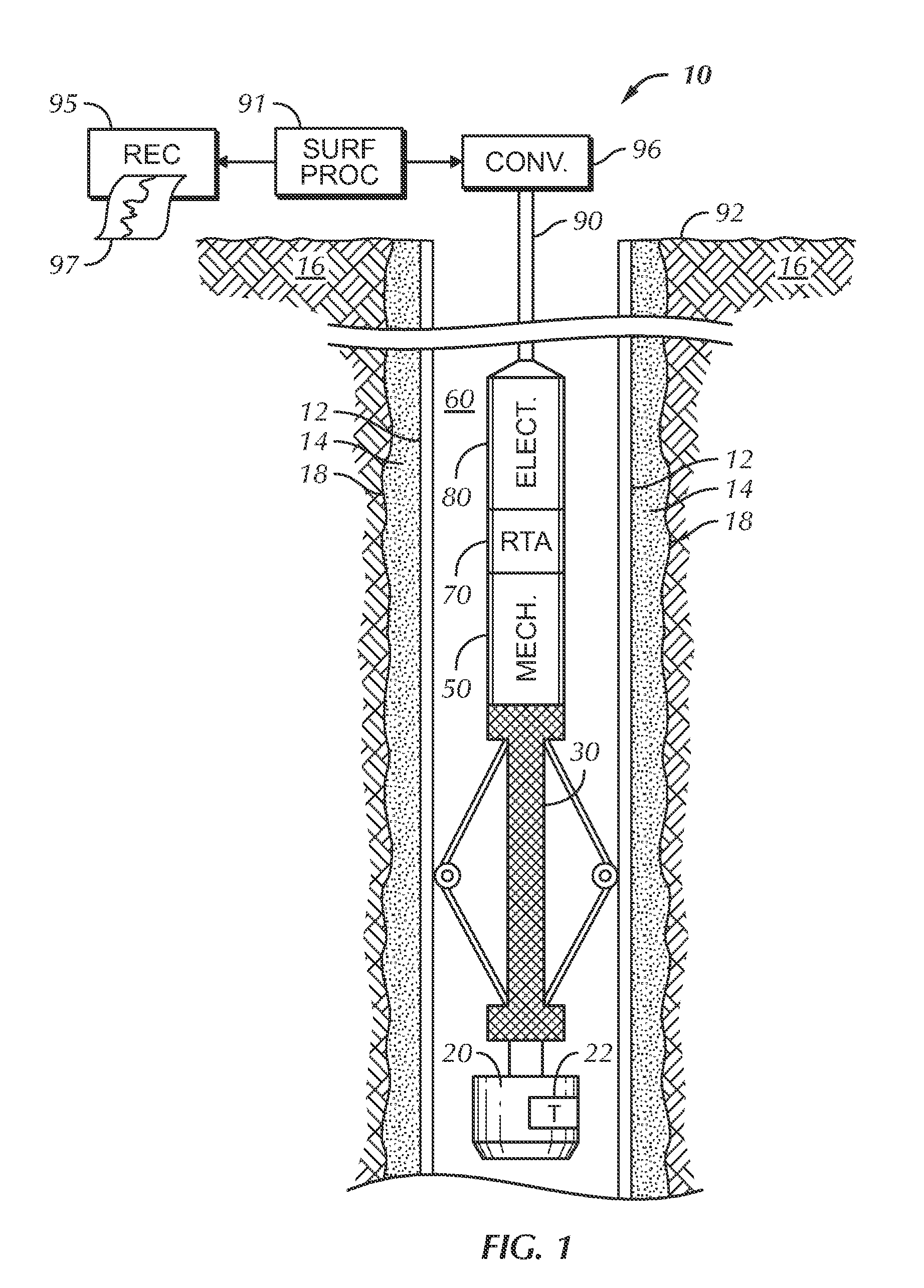Method and apparatus for logging foam cement in cased boreholes
a technology of foam cement and cased boreholes, which is applied in seismology, instruments, constructions, etc., can solve the problems of difficult distinguishing foam cement from liquid or gas well fluid, affecting the accuracy of telemetry, and compromising hydraulic isolation, so as to minimize the width requirements of the telemetry band
- Summary
- Abstract
- Description
- Claims
- Application Information
AI Technical Summary
Benefits of technology
Problems solved by technology
Method used
Image
Examples
examples presented
[0049 below that illustrate fluid and foam cement effects on the acoustic impedance measurement and on the resulting final impedance maps.
[0050]FIG. 3 is an impedance map and a group of eight related impedance logs illustrating response of the ultrasonic cement scanner logging system to a situation in which well fluid fills the casing-borehole annulus. Recall that the rotating transducer 22 preferably fires 72 times per azimuthal rotation within the borehole. Groups or “tracks” of curves 124, 126, 128, 130, 132, 134 and 136 comprise “traces” each represent nine logs of acoustic impedance Zi(x) computed from transducer responses in azimuthal arc segments 0-45 degrees, 46-90 degrees, 91-135 degrees, 136-180 degrees, 181-225 degrees, 226-270 degrees, 271-315 degrees, and 316-360 degrees, respectively. The vertical axis represents depth x in the borehole. Note the small variation in individual traces of Zi(x) over depth intervals of a few feet, except for excursions 140 at casing collar...
PUM
 Login to View More
Login to View More Abstract
Description
Claims
Application Information
 Login to View More
Login to View More - R&D
- Intellectual Property
- Life Sciences
- Materials
- Tech Scout
- Unparalleled Data Quality
- Higher Quality Content
- 60% Fewer Hallucinations
Browse by: Latest US Patents, China's latest patents, Technical Efficacy Thesaurus, Application Domain, Technology Topic, Popular Technical Reports.
© 2025 PatSnap. All rights reserved.Legal|Privacy policy|Modern Slavery Act Transparency Statement|Sitemap|About US| Contact US: help@patsnap.com



